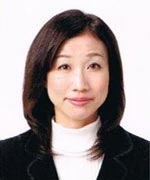Faculty
Kazumi Yamada
Major research activity
 My research area is applied linguistics. Specifically, my research interest focuses on how a second language (L2 = a foreign language) is acquired. Why can children attain the complexities of their first language (L1) grammars in only four or five years? Why can adult learners not acquire L2 in many cases though they are cognitively mature? In 1950s Chomsky claimed that we humans are born with Universal Grammar (UG), which is thought of as a language acquisition device. Because UG functions in their mind, every child normally can acquire their L1 in spite of the fact that the amount of L1 input from their care takers and people around them is quite limited. Then, is UG still operative when adult learners acquire L2 or can they still have access to UG? I would like to make it clear from a linguistic viewpoint that a mechanism for language acquisition is operating in a process of L2 acquisition. I'm currently studying the acquisition of null/overt subjects and null/overt objects by adult English as a foreign language (EFL) / Spanish as a foreign language (SFL) / Japanese as a foreign language (JFL) learners. I aim to consider how the findings of generative L2 acquisition research might apply to language teaching.
My research area is applied linguistics. Specifically, my research interest focuses on how a second language (L2 = a foreign language) is acquired. Why can children attain the complexities of their first language (L1) grammars in only four or five years? Why can adult learners not acquire L2 in many cases though they are cognitively mature? In 1950s Chomsky claimed that we humans are born with Universal Grammar (UG), which is thought of as a language acquisition device. Because UG functions in their mind, every child normally can acquire their L1 in spite of the fact that the amount of L1 input from their care takers and people around them is quite limited. Then, is UG still operative when adult learners acquire L2 or can they still have access to UG? I would like to make it clear from a linguistic viewpoint that a mechanism for language acquisition is operating in a process of L2 acquisition. I'm currently studying the acquisition of null/overt subjects and null/overt objects by adult English as a foreign language (EFL) / Spanish as a foreign language (SFL) / Japanese as a foreign language (JFL) learners. I aim to consider how the findings of generative L2 acquisition research might apply to language teaching.
Major relevant publications
- K. Yamada, "Nihonjin eigo gakushuusha ni yoru kanshi no shuutoku - ACP to FH no wakugumi kara [The acquisition of articles by Japanese EFL learners ? in a framework of ACP and FH]", In K. Fujita, M. Matsumoto, K. Kodama, and K. Taniguchi (Eds), 'Saishin gengo riron o eigo kyoiku ni katuyou suru [Applying the latest linguistic theories to English education]', Tokyo: Kaitaku sha, 2012, 94-107
- K. Yamada, "The Interpretation of Argument Ellipsis by Japanese Child and Adult Speakers", Kwansei Gakuin University Humanities Review, 17, 2012, 159-169
- *R. Hawkins, G. Casillas, H. Hattori, J. Hawthorne, R. Husted, C. Lozano, A. Okamoto, E. Thomas, K. Yamada (in alphabetical order), "The semantic effects of verb raising and its consequences in second language grammars". In J. Liceras, H. Zobl, and H. Goodluck (Eds), 'The role of formal features in second language acquisition', London: Routledge, 2007, 328-351



